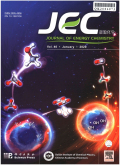- 钛学术文献服务平台 \
- 学术期刊 \
- 工业技术期刊 \
- 石油与天然气工业期刊 \
- 能源化学期刊 \
Effect of BaNH, CaNH, Mg3N2 on the activity of Co in NH3 decomposition catalysis
Effect of BaNH, CaNH, Mg3N2 on the activity of Co in NH3 decomposition catalysis
基本信息来源于合作网站,原文需代理用户跳转至来源网站获取
摘要:
Development of active and non-noble metal-based catalyst for H2 production via NH3 decomposition is crucial for the implementation of NH3 as a H2 carrier. Co-based catalysts have received increasing at-tention because of its high intrinsic activity and moderate cost. In this work, we examined the effect of BaNH, CaNH and Mg3N2 on the catalytic activity of Co in the NH3 decomposition reaction. The H2 forma-tion rate ranks the order as Co-BaNH > Co-CaNH > Co-Mg3N2 ≈ Co/CNTs within a reaction temperature range of 300–550 ℃. It is worth pointing out that the H2 formation rate of Co-BaNH at 500 ℃ reaches 20 mmolH2 gcat–1 min–1, which is comparable to those of the active Ru/Al2O3 (ca. 17 mmolH2 gcat–1 min–1) and Ru/AC (21 mmolH2 gcat–1 min–1) catalysts under the similar reaction conditions. In-depth research shows that Co-BaNH exhibits an obviously higher intrinsic activity and much lower Ea (46.2 kJ mol–1) than other Co-based catalysts, suggesting that BaNH may play a different role from CaNH, Mg3N2 and CNTs during the catalytic process. Combined results of XRD, Ar-TPD and XAS show that a [Co–N–Ba]-like intermediate species is likely formed at the interface of Co metal and BaNH, which may lead to a more energy-efficient reaction pathway than that of neat Co metal for NH3 decomposition.

推荐文章
Li3N、Mg3N2、Ca3N2催化作用的比较和分析
催化剂
氮化锂
氮化镁
氮化钙
NO与Co(NH3)2+6气液反应动力学
动力学
吸收
气液反应
一氧化氮
NH3/CO2低温制冷系统研究
二氧化碳
氨
制冷系统
天然工质
NH3/CO2超市制冷系统的分析研究
NH3/CO2
超市
制冷系统
环保
节能
内容分析
关键词云
关键词热度
相关文献总数
(/次)
(/年)
引文网络
引文网络
二级参考文献 (0)
共引文献 (0)
参考文献 (0)
节点文献
引证文献 (0)
同被引文献 (0)
二级引证文献 (0)
2020(0)
- 参考文献(0)
- 二级参考文献(0)
- 引证文献(0)
- 二级引证文献(0)
引文网络交叉学科
相关学者/机构
期刊影响力
能源化学
主办单位:
中国科学院大连化学物理研究所
中国科学院成都有机化学研究所
出版周期:
双月刊
ISSN:
2095-4956
CN:
10-1287/O6
开本:
出版地:
大连市中山路457号
邮发代号:
创刊时间:
语种:
eng
出版文献量(篇)
2804
总下载数(次)
0
总被引数(次)
7996
期刊文献
相关文献
推荐文献
- 期刊分类
- 期刊(年)
- 期刊(期)
- 期刊推荐
一般工业技术
交通运输
军事科技
冶金工业
动力工程
化学工业
原子能技术
大学学报
建筑科学
无线电电子学与电信技术
机械与仪表工业
水利工程
环境科学与安全科学
电工技术
石油与天然气工业
矿业工程
自动化技术与计算机技术
航空航天
轻工业与手工业
金属学与金属工艺
能源化学2022
能源化学2021
能源化学2020
能源化学2019
能源化学2018
能源化学2017
能源化学2016
能源化学2015
能源化学2014
能源化学2013
能源化学2012
能源化学2011
能源化学2010
能源化学2009
能源化学2008
能源化学2007
能源化学2006
能源化学2005
能源化学2004
能源化学2003
能源化学2002
能源化学2001
能源化学2020年第9期
能源化学2020年第8期
能源化学2020年第7期
能源化学2020年第6期
能源化学2020年第5期
能源化学2020年第4期
能源化学2020年第3期
能源化学2020年第12期
能源化学2020年第11期
能源化学2020年第10期
能源化学2020年第1期

 免费查重
免费查重










